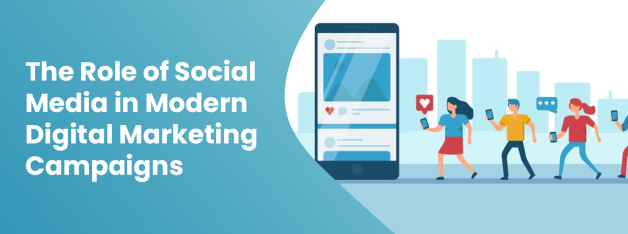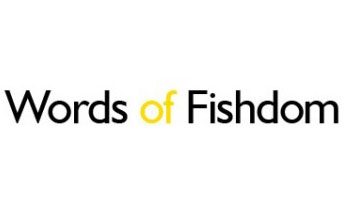Role of Social Media in Modern Digital Marketing Campaigns

Social media has radically changed the roles of brands in consumerism. Gone are those entertainment-only spaces; social media platforms have now become the prime mediums for brand awareness, engagement, and measurable results.
From targeted advertising to driving website traffic, social media usage is crucial for businesses to gain the most from their digital marketing. Let’s find out how social media complements marketing campaigns and why it’s an absolute must-have in today’s digital world.
1. Building Brand Presence and Identity
Any brand trying to gain credibility in front of its target audience must ensure it has a strong social media presence. Traditional marketing is always static, and social media will let the world know who they are, what they believe, and what drives them.
For instance, the Nike Instagram and Twitter campaigns continuously affirm its “Just Do It” slogan, giving the brand an image of inspiration and empowerment.
Pro Tip: Make sure that voice, logo, and messaging all align across channels to further enhance brand identity.
2. Leveraging Social Media for Increased Website Traffic
Your website is the online front door to your business. But how do you get people walking through that door? Social media is the conduit that gets the attention of those potential customers from their favorite platform to your website.
How to Drive More Traffic:
- Publish engaging blog posts that have direct links to your website.
- Have stronger call-to-action text such as “Shop Now,” “Learn More,” and run time-limited offers to tempt users to click through.
- Case study: The bakery is small in size but gained 45 percent more website visitors by running an ad campaign via Facebook with “Buy Online” in the CTA.
3. Boost Brand Visibility through Interesting Contents
Content is king, and great content makes the brands memorable. Social media provides opportunities for businesses to create and share valuable, shareable content beyond traditional marketing.
Types of Engaging Content
- Short-form videos (TikTok, Instagram Reels)
- User-generated content (UGC)
- Educational blog posts & infographics
- Behind-the-scenes company stories
- Example: GoPro UGC campaigns showing real customers using their products increased authenticity and trust.
Pro Tip: Leverage popular hashtags and engaging polls to raise engagement.
4. Engaging with Customers and Developing Brand Loyalty
Social media does not only offer one-way communication like the traditional approach to marketing. Two-way communication allows brands that respond to their customers to establish more robust relationships and brand loyalty.
How to Boost Engagement:
- Respond to comments and messages promptly.
- Host Q&A sessions or live videos.
- Ask for opinions in engaging posts.
- Case Study: Wendy’s social media strategy through Twitter has been clever, funny responses that make Wendy’s one of the most followed fast-food brands online.
Takeaway: The customers will stick with brands that are meaningfully engaging with them.
5. Leverage Targeted Ads for Increased Conversions
One of the most effective strengths of social media marketing is the ability to run targeted ads. While traditional advertisements spread like a blanket, social media ads target the demographics, interests, and behaviors that are pertinent to your business.
Why Targeted Ads Work:
- They hit the right people at the right time.
- Budget flexibility-only spend on interested users.
- Measurable results through engagement and conversion metrics.
- Example: A local gym ran Facebook ads targeting fitness enthusiasts within a 10-mile radius, leading to a 30% increase in sign-ups.
Pro Tip: Use A/B testing to determine which ad creatives perform best.
6. Humanizing Brands Through Social Media Interactions
Today’s customers want brands to be more than just a company; they expect authenticity and personality. Social media allows businesses to reveal their human side, thereby making them relatable.
Airbnb often publishes heartwarming stories of its hosts and travelers, reinforcing its values of community and belonging.
Takeaway: The more personal and authentic your brand seems, the stronger the connection with the customer.
7. Using Analytics to Measure Campaign Success
Social media campaigns are not just about posting content—they require tracking and optimization. Platforms like Facebook Insights, Instagram Analytics, and Google Analytics provide valuable data to measure success.
Key Metrics to Monitor:
- Engagement Rate (likes, shares, comments)
- Click-Through Rate (CTR) – Measures how many users click on links.
- Follower Growth Rate – Indicates brand expansion.
- Example: A fashion retailer used Instagram Analytics to find the best posting time, increasing engagement by 40%.
Pro Tip: Monitor performance weekly and adjust strategies as needed.
Conclusion: The Power of Social Media in Digital Marketing
Social media is no longer a luxury marketing tool; it is now a necessity in building brand presence, enhancing brand loyalty, and other forms of engagement. Whether it’s running targeted ads, creating engaging content, or looking to drive more brand awareness, social media offers the reach, insights, and engagement needed to drive success.
Key Takeaways:
- Use social media to drive traffic to your website and sales.
- Create shareable, engaging content to drive more visibility.
- Use analytics to fine-tune strategies for maximum ROI.
Ready to Leverage the Full Power of Social Media? It’s Time to Create Engaging Content, Interact with Your Target Audience, and See Your Brand Grow!
FAQs About Social Media in Digital Marketing
Q: Which social media platform is best for my business?
A: It depends on your audience. Instagram is great for lifestyle brands, LinkedIn for B2B, and TikTok for younger demographics.
Q: How often should I post?
A: At least 3–5 times a week to maintain engagement without overwhelming your audience.
Q: Should I rely only on organic reach or invest in ads?
A: Organic and paid content need to be interwoven with each other in order to create the best output.
